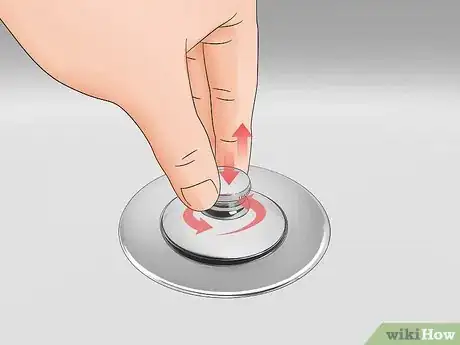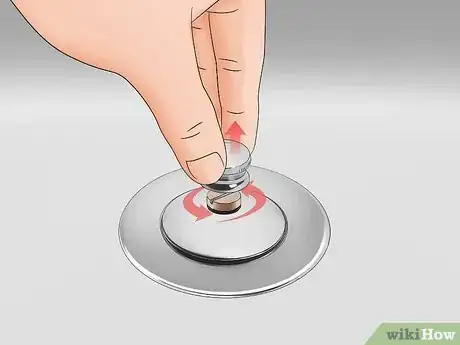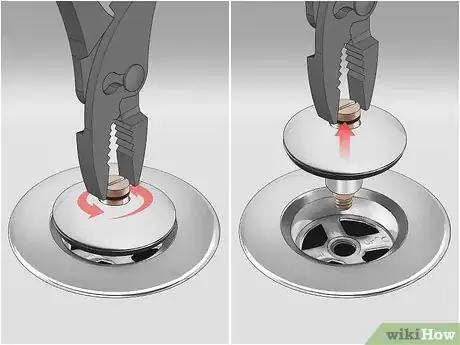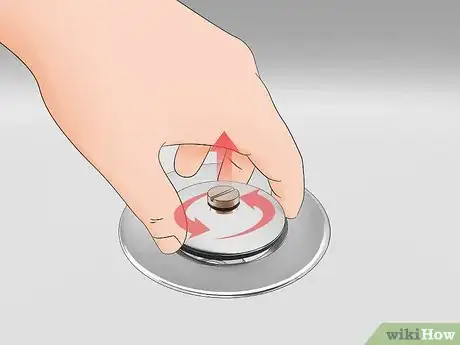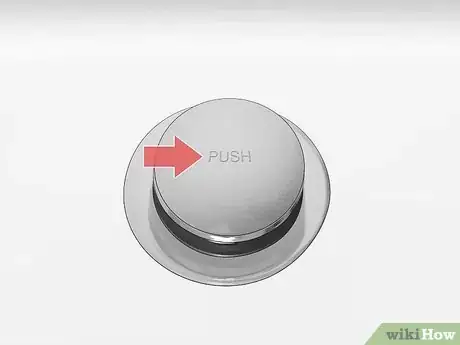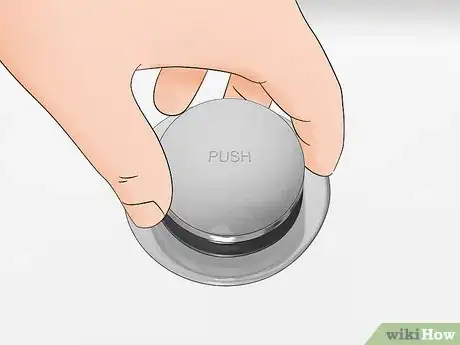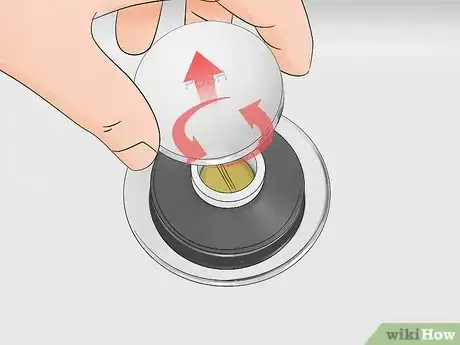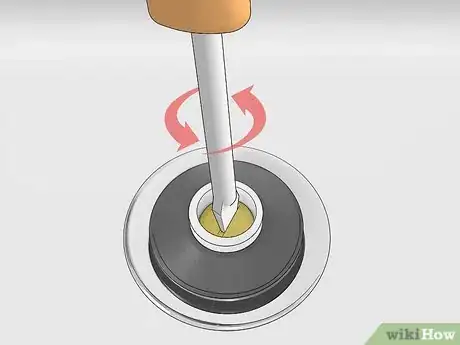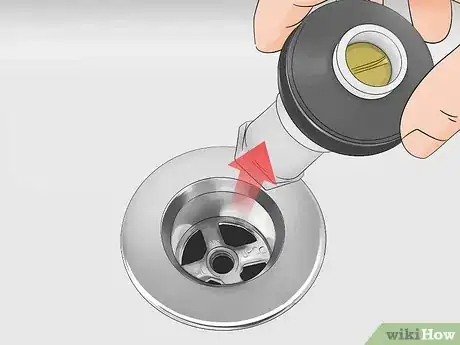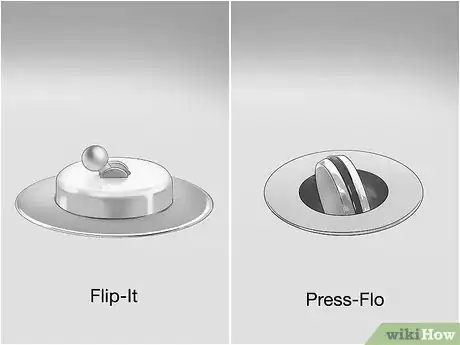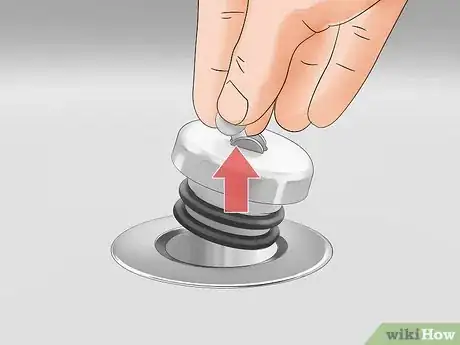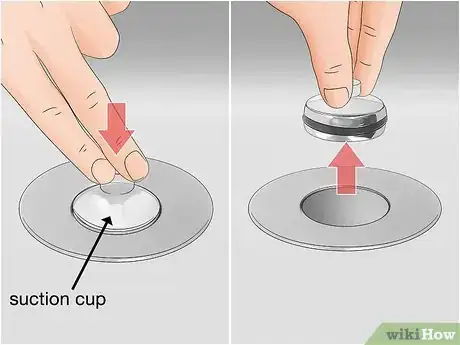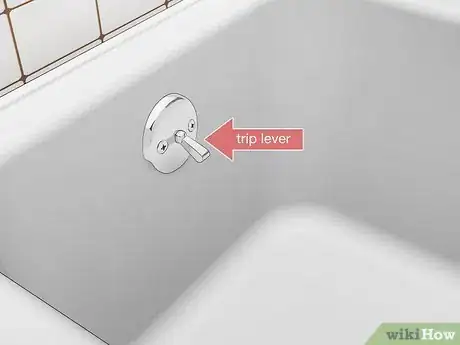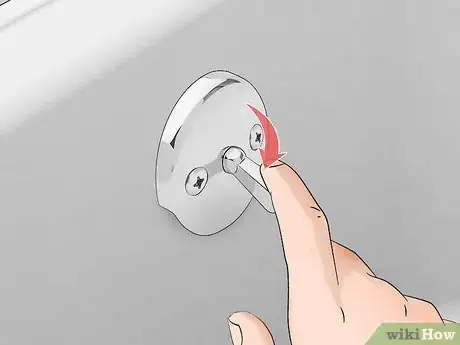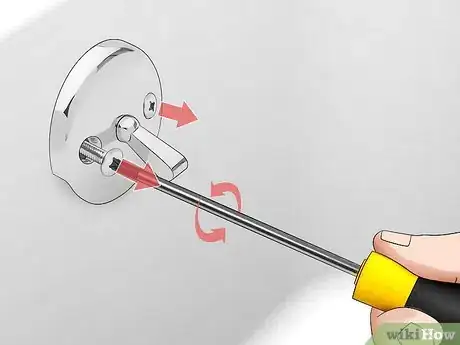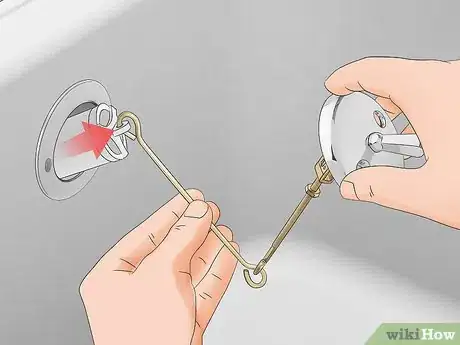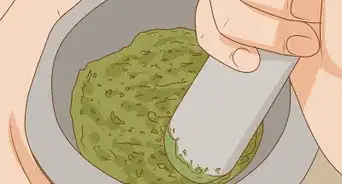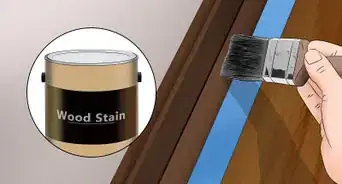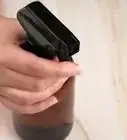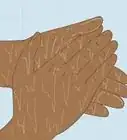This article was co-authored by wikiHow Staff. Our trained team of editors and researchers validate articles for accuracy and comprehensiveness. wikiHow's Content Management Team carefully monitors the work from our editorial staff to ensure that each article is backed by trusted research and meets our high quality standards.
There are 10 references cited in this article, which can be found at the bottom of the page.
This article has been viewed 42,182 times.
Learn more...
Tub drains can quickly become filled with hair and gunk or even get rusty. In order to repair or clean your tub’s drain, you first have to remove the stopper. While there are several kinds of tub stopper, a pair of pliers, a screwdriver, and a suction cup are the most you’ll need to have the stopper disassembled in just a few minutes.
Steps
Twisting a Lift-and-Turn or Push-Pull Stopper
-
1Check for a knob on the drain stopper. If the stopper has a knob coming out of the top, it is almost certainly either a lift-and-turn or push-pull stopper. Both of these varieties can be removed in a similar way, with a twisting motion on either the knob or the whole stopper assembly.
- The main difference between lift-and-turn and push-pull stoppers is the what you do once you lift them up. As the names suggest, you only have to lift a push-pull stopper, whereas a lift-and-turn stopper must be turned as well.
-
2Rotate the knob counter-clockwise to see if it lifts off. Underneath the knob, there may be bolt that holds the stopper in place in the drain. In order to access the fastener, remove the knob with a few twists. It may be on loosely, meaning fingers will work just fine, but if it is on too tightly, try using pliers to rotate the knob.[1]
- Some knobs don’t turn, including many push-pull knobs, so don’t try to twist too hard.
Advertisement -
3Twist the bolt below the knob with pliers if one is present. The bolt will likely stick up where the knob was sitting. The whole plug will pop out in one piece when you have loosened the fastener enough.[2]
- Closing the drain after removing the knob will help you twist the bolt off more easily.
- This is more common with push-pull stoppers than lift-and-turn stoppers.
-
4Turn the base if the knob won’t come off. Some stoppers have knobs that are fixed to the base, meaning that the whole stopper must be unscrewed all at once. Use pliers to twist the stopper when you feel it slip into the groove of the drain. The stopper will slip out of the drain in one piece.[3]
- Lift-and-turn stoppers are often removable with this approach.
Unscrewing a Toe-Touch Tub Drain Stopper
-
1See if the stopper says “Push” or is rounded with no knob. This kind of stopper is called a toe-touch stopper, since you can simply press on it with your foot to open and close it. Toe-touch stoppers are one of the simplest to use, but they can be difficult to remove without the right approach.
-
2Grasp the stopper while it is in the open position. Pop the stopper up so that water could flow through it, and then grab the cap firmly with your hands or a pair of pliers. You can also press down on the metal ring that the stopper is pressed into when depressed for extra grip.[4]
- Don’t try to remove a toe-touch stopper while it is in the closed position. It won’t come off and you might scratch the metal.
-
3Use your fingers or pliers to twist the stopper cap counter-clockwise. The metal cap will pop off after a few twists if you are using enough force. If it just rotates without unscrewing, try pulling up vertically as you twist.[5]
-
4Loosen the screw inside the stopper with a flathead screwdriver. Rotate the flat tip of the screwdriver counter-clockwise to unscrew the screw and release the stopper from its position in the drain. You don’t have to remove the screw from the stopper, it simply has to be loose enough to lift.[6]
-
5Pull the plug assembly out of the drain. You can lift the stopper out as one piece, aside from the metal cap you twisted off before. There is no need to disassemble the stopper and you can simply screw it back in when you have finished your repair or cleaning project.[7]
Pulling O-Ring Stoppers Out of a Drain
-
1Check for a flip lever or a small hole in the stopper. So-called “Flip-It” and “Press-Flo” stoppers are both brand-name bathtub drain stoppers that can be removed quickly and easily. These stoppers are fixed in place by an o-ring that prevents them from slipping into the drain, and can simply be pulled out.
-
2Pull the stopper up by its flip lever, if it has one. The lever makes a perfect handle for pulling out a plug. The stopper should lift out of the drain with ease, but if it feels tight, you can jiggle it by the handle until it is loose enough to lift.
-
3Use a suction cup to pull a “Press-Flo” stopper out. This brand-name plug most likely came with a perfectly sized suction cup for you to use, but it may have gotten lost over the years. Any small suction cup will be able to latch onto the stopper when you press on the center. Just pull up on the suction cup to pry the plug out of the drain.[8]
Disassembling Faceplate-Control Drain Stoppers
-
1Look for a control on the overflow faceplate of the bathtub. Usually located below the tub spout, the overflow drain may have a trip lever or the ability to twist. This mechanism is attached to an arm or cable feature that opens and closes the drain stopper. There is typically a grate over the drain with this set-up.
-
2Flip or rotate the faceplate until the plug is in the open position. Opening the drain will allow you to remove the drain stopper assembly. If the drain stopper were closed, you would not be able to pull it out all the way through the hole behind the faceplate.[9]
-
3Remove the screws from the faceplate. Use a Phillips or flathead screwdriver to rotate both of the screws counter-clockwise to remove them from the faceplate. Unscrew them slowly so that you can avoid dropping any components behind the plate into the tub or drain, particularly if you have removed the metal grate.[10]
-
4Pull the entire overflow plate, arm, and stopper assembly out of the tub. The plate you unscrewed from the tub will be attached to an arm or cable mechanism that blocks water from entering the drain pipe below the metal grate in the tub. You simply have to pull the whole assembly out gently through the overflow hole in the tub.[11]
- Be sure to pull the drain stopper straight away from the wall. The lever assembly will unfold on its own.
References
- ↑ https://youtu.be/mnsP8Z953I8?t=19
- ↑ https://youtu.be/mnsP8Z953I8?t=33
- ↑ https://youtu.be/mqTCZaB1VT0?t=88
- ↑ https://youtu.be/xrOIGlPCgtw?t=13
- ↑ https://youtu.be/xrOIGlPCgtw?t=13
- ↑ https://youtu.be/xrOIGlPCgtw?t=28
- ↑ https://youtu.be/xrOIGlPCgtw?t=36
- ↑ https://youtu.be/kdLHT1bKySs?t=19
- ↑ https://youtu.be/unTzz5b2rFY?t=58
